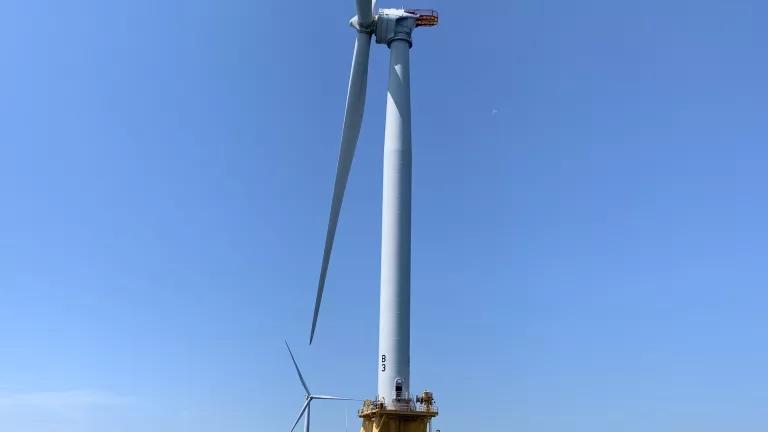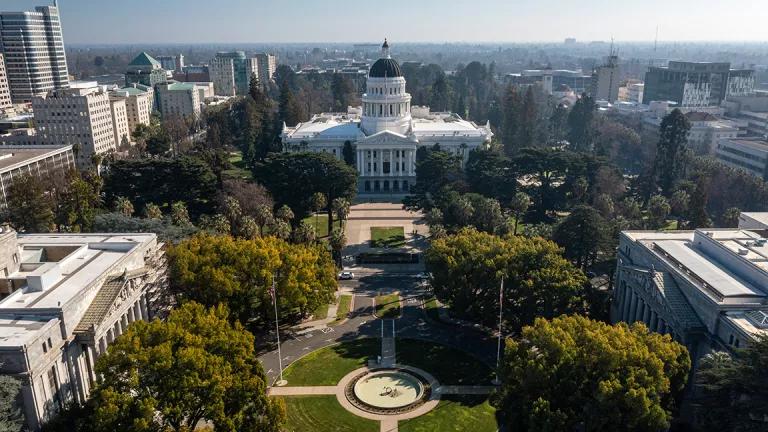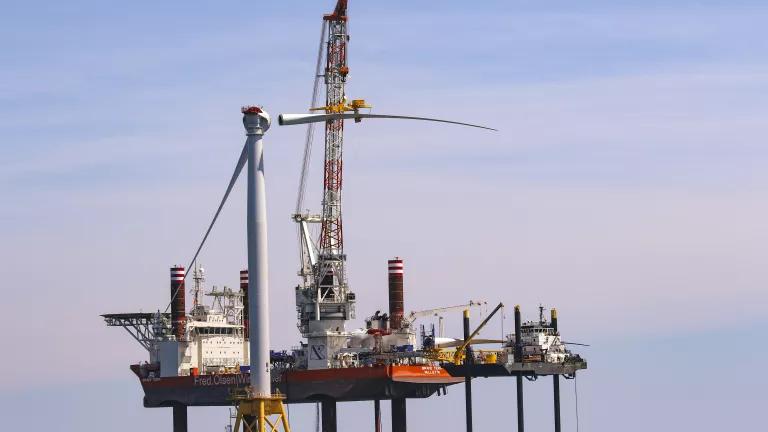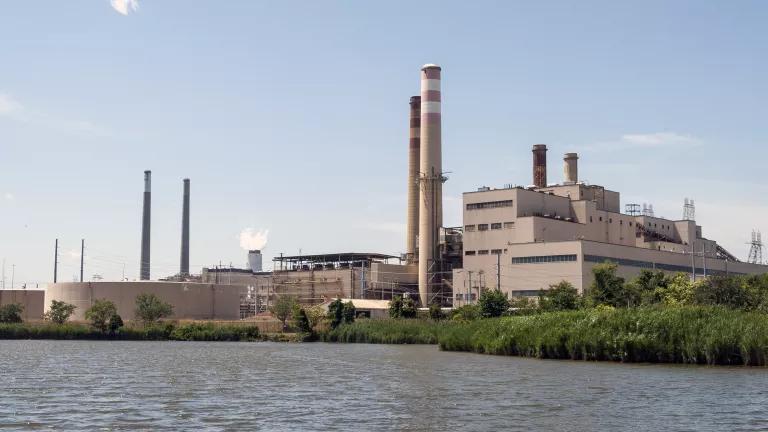In 2021 It's Off to the Races for Offshore Wind

This is the year offshore wind goes from learning to walk to an all-out sprint. The first two weeks of 2021 contained big news for this critical source of clean energy, and this week’s inauguration of President Joe Biden will put a stiff wind into the industry’s sails. By the end of 2021, the Biden administration will likely have approved two projects and be in the process of reviewing up to a dozen more on the eastern seaboard, stretching from North Carolina to Massachusetts.
Offshore wind is a key tool in warding off the most devastating impacts of climate change. With 53 percent of the country’s population on both coasts, offshore wind is near areas that consume large amounts of electricity. Offshore wind can also meet growing clean energy needs during rainy and cloudy winter months when less solar is energy available. Even more appealing from an energy planner’s perspective is that offshore winds often ramp up in the afternoon and evening when the sun goes down—and home electricity use jumps.
Having clean electricity near where people live means we can get rid of dirty fossil fuel plants, which are often located in disadvantaged communities. Offshore wind will also allow us to revitalize our port communities. The lean energy sector has been hard hit by the pandemic-created recession, but offshore wind can put people back to work in good paying jobs, many of them unionized.
For offshore wind, 2021 started on January 4, with a bureaucratic but important step. The Bureau of Ocean Energy Management, located within the Department of the Interior and responsible for permitting offshore wind in federal waters, released a draft environmental impact statement for Ørsted’s South Fork Wind project. Off the coast of Long Island, the project will be the first in New York. It will consist of fifteen, nine megawatt turbines capable of powering 70,000 homes with clean, renewable energy. Comments are due on February 21 and final approval for the project is likely in the spring.
In the second week of 2021, New York Governor Andrew Cuomo announced the winner of two additional contracts for offshore wind totaling 2,500 MW to Equinor. It’s the largest single purchase of offshore wind by a state, and NY will make another procurement by the end of the year. Governor Cuomo also announced $664 million in new investments in port infrastructure that positions New York as a global wind energy manufacturing powerhouse. Most if not all of Equinor’s wind turbines will be on what are known as “gravity-based” foundations, which will be built in Albany and shipped to the project sites. In addition to being manufactured in New York, these foundations make almost no noise when they’re installed, which is great news for marine wildlife, particularly whales and other mammals that can be disturbed from excess noise.
The biggest news, of course, is that Joseph R. Biden Jr. is now president. He made addressing climate change a centerpiece of his campaign, including setting a goal of a zero-emissions electric grid by 2035. In his first day in office, President Biden signed an Executive Order rejoining the Paris Agreement, and his chief of staff, Ron Klain, announced that the first 10 days would include executive actions, memorandums and cabinet agency directives “to address the climate crisis with the urgency the science demands and ensure that science guides the administration’s decision making.” Given offshore wind’s multiple benefits of fighting climate change, cleaning up the air we breathe, and creating jobs, it seems very likely that President Biden will make offshore wind a priority for early action.
Having so many projects at various stages of development, the challenge for the Biden administration will be to do it right, not just fast. Offshore wind projects are big, and like all infrastructure, they can have negative environmental impacts if not developed responsibly. This means that we should be guided by the best available science and the experience of other countries when deciding how to move forward and keep learning as we move forward.
We must take appropriate precautions when siting, constructing, and operating offshore wind turbines and undertake the necessary research and project monitoring to guide us as we keep learning how to better protect ocean wildlife. The Biden administration can build a lasting foundation of support for offshore wind by requiring best management practices when developing rules governing offshore wind development, doing more to bring in a broader array of stakeholders into the planning and siting process, and requiring plans that can adapt over time so that we can all learn as the projects go. The goal should be regulatory, economic and legal certainty through transparency, best practices, and learning.
We need offshore wind to achieve our clean energy goals, and we need to make sure to do it right. Let’s get to work.



